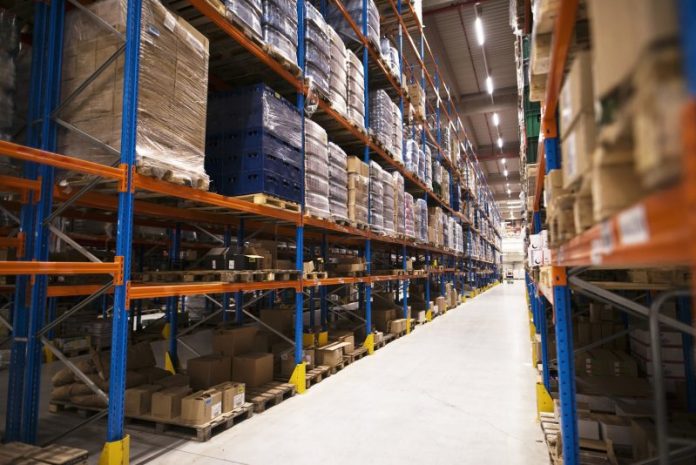
-
Growth in the Philippine cold chain industry is continuing, with about 132,000 pallet positions expected to be added by year-end
-
This takes the country’s total capacity for 2023 to 682,000 pallet positions
-
Cold Chain Association of the Philippines technical consultant Marc Anthony Dizon forecasts further expansion in 2024 with 150,000 pallet positions likely to be added
-
Dizon said the cold chain industry in the Philippines has “grown exponentially” in the last 25 years and so has demand for cold storage
The Philippine cold chain industry is estimated to add about 132,000 pallet positions by the end of 2023, according to an officer of the Cold Chain Association of the Philippines (CCAP).
This would raise the country’s total capacity by year-end to about 682,000 pallet positions, CCAP technical consultant Marc Anthony Dizon said in a presentation during the recent Cold Chain Technology Symposium. Dizon is also general manager of Fast Cold Chain Solutions.
The estimated 132,000 pallet positions, those already in place and those for commissioning this year, will be far more than the 36,500 pallet positions commissioned in 2022, which had increased last year’s total capacity to about 550,000 pallet positions.
For 2024, Dizon forecast that 150,000 pallet positions would be added as there are plans to build that number.
The increase is in line with the target under the Philippine Cold Chain Industry Roadmap, which aims to increase cold storage capacity by 10-15% or 50,000 pallets annually to provide services to the increasing demand of various industries.
The roadmap, launched by the Board of Investments in December 2020, aims to provide a stakeholder-driven, inclusive and market-oriented roadmap to guide the industry in future years and help it adapt to the “new normal.” CCAP is vice chair of the National Cold Chain Committee created under the roadmap.
CCAP president Anthony Dizon had earlier told PortCalls that, based on the group’s statistics, the cold chain industry has sustained a growth rate of about 10% per year since the Philippine Cold Chain Industry Roadmap was launched in late 2020.
READ: Cold chain industry sees 10% annual growth since 2020
Marc Dizon said the cold chain industry in the Philippines has “grown exponentially” in the last 25 years and that demand for cold storage is growing.
He noted that the country’s population grows at least 1.5% per year and this means more storage capacities are needed to sustain the increased demand for food. The Philippines’ urbanization index is also now at 47.68% and is growing at least 0.06% per year.
Dizon said urbanizations comes with the desire for an easier and more convenient lifestyle. That includes preference to buy food from supermarkets instead of wet markets and ordering food instead of dining in, and this requires the support of cold chain.
The Food Safety Act of 2013 also requires adhering to one standard for food handling, Dizon noted.
While demand is growing, the industry is facing several challenges, such as the high cost of doing business.
Dizon said the cost to set up an industrial-sized cold storage facility is at P65,000 per pallet position, based on industry estimates. This means a facility with 4,000 pallet positions will cost about P260 million, excluding the cost of land/real estate, while return on investment will take 8 to 10 years with an estimated interest cost of 7% per year.
He said if the country continues to import products, there will be a need for more and bigger cold storages. To support local agriculture, though, smaller facilities in strategic locations may be the option.
Another challenge is that many of the country’s ports are not built to support cold chain cargoes. There are limited plugs for reefer containers and only a few ports can handle 40-foot containers. While roll-on/roll-off is an option, it presents issues such as delays due to weather conditions and traffic.
Another challenge, which hits cold storage operators the most, is the price of electricity. Dizon noted that power accounts for 25-50% of operating expenses.
He noted that the price of electricity in the Philippines is one of the most expensive in Southeast Asia, and it becomes more expensive outside Luzon.
Dizon said CCAP has been talking to a lot of distribution companies and, through the government’s Retail Competition and Open Access program, qualified operators are able to decide which electricity suppliers to source power from and get savings.
Another challenge is the mindset of Filipinos that “fresh” is better than frozen, as well as traditional options that allow them to preserve or extend the life of food without the need for refrigeration, such as drying or smoking.
Dizon said there is also a misconception that using cold storage is pricier, especially for small traders and producers. He said this may not be the case. For example, the cost of cold storage per day for a kilo of pork or a kilo of onion is P0.10 or P3 per month.
There are also outside factors that are beyond the control of cold storage operators, such as supply and logistics issues. – Roumina Pablo




